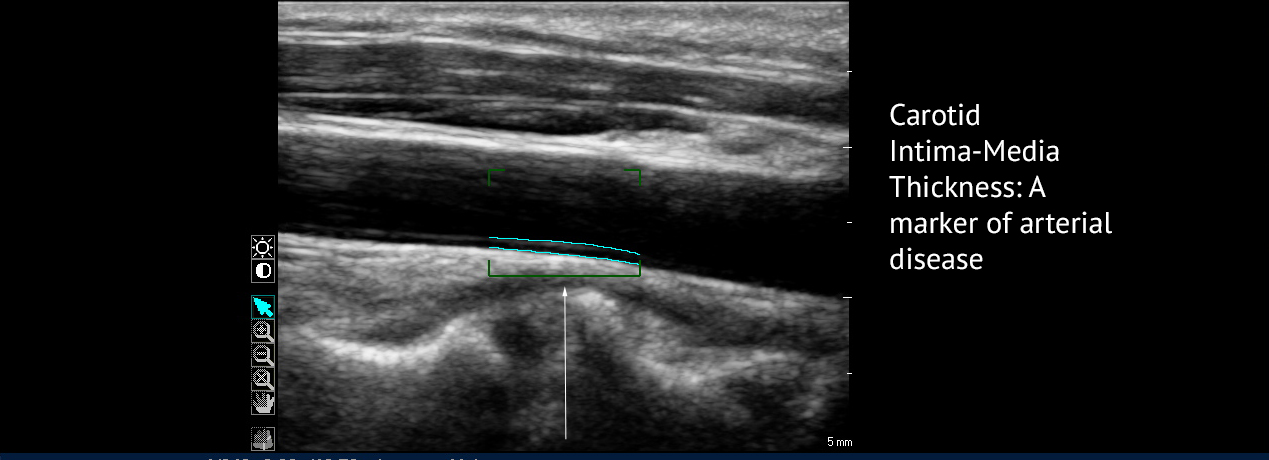Primary Prevention: Preventing the development of atherosclerosis and associated cardiovascular disease, requires attention to the risk factors which we know trigger and promote its development. The intensity with which these risk factors are addressed may be guided by a risk assessment to determine the likelihood of suffering an adverse cardiovascular event with a given time frame (stroke or heart attack). Risk assessment tools include information on Age, sex, family history, blood test results, smoking history, ethnicity, blood pressure, co-existing health problems and sometimes ultrasound scans measure the thickness of blood vessel walls (Figure). Some people are at high risk even at a young age, and so stand to benefit most from early preventative steps.
Risk Factors: Modifiable risk factors include smoking, unhealthy eating habits, unhealthy lifestyle without enough physical activity, high blood pressure, high cholesterol and obesity.
All adults should aim to abstain from tobacco, to exercise daily, and to eat a balanced diet. An awareness of blood pressure and cholesterol levels is very important, requiring engagement with a primary care physician.
Secondary Prevention: This refers to modifying the risk of disease progression when it is already present. Most patients who have atherosclerosis are unaware that the disease is present. The recommendations are the same as for primary prevention. However, the role for daily medication is greater, and a rigorous programme for lifestyle adjustment and risk factor modification is important.

An ultrasound scan of the carotid artery in the neck can be used to assess the extend of atherosclerosis and predict the likelihood of a further adverse vascular event, guiding the need for preventative measures.
